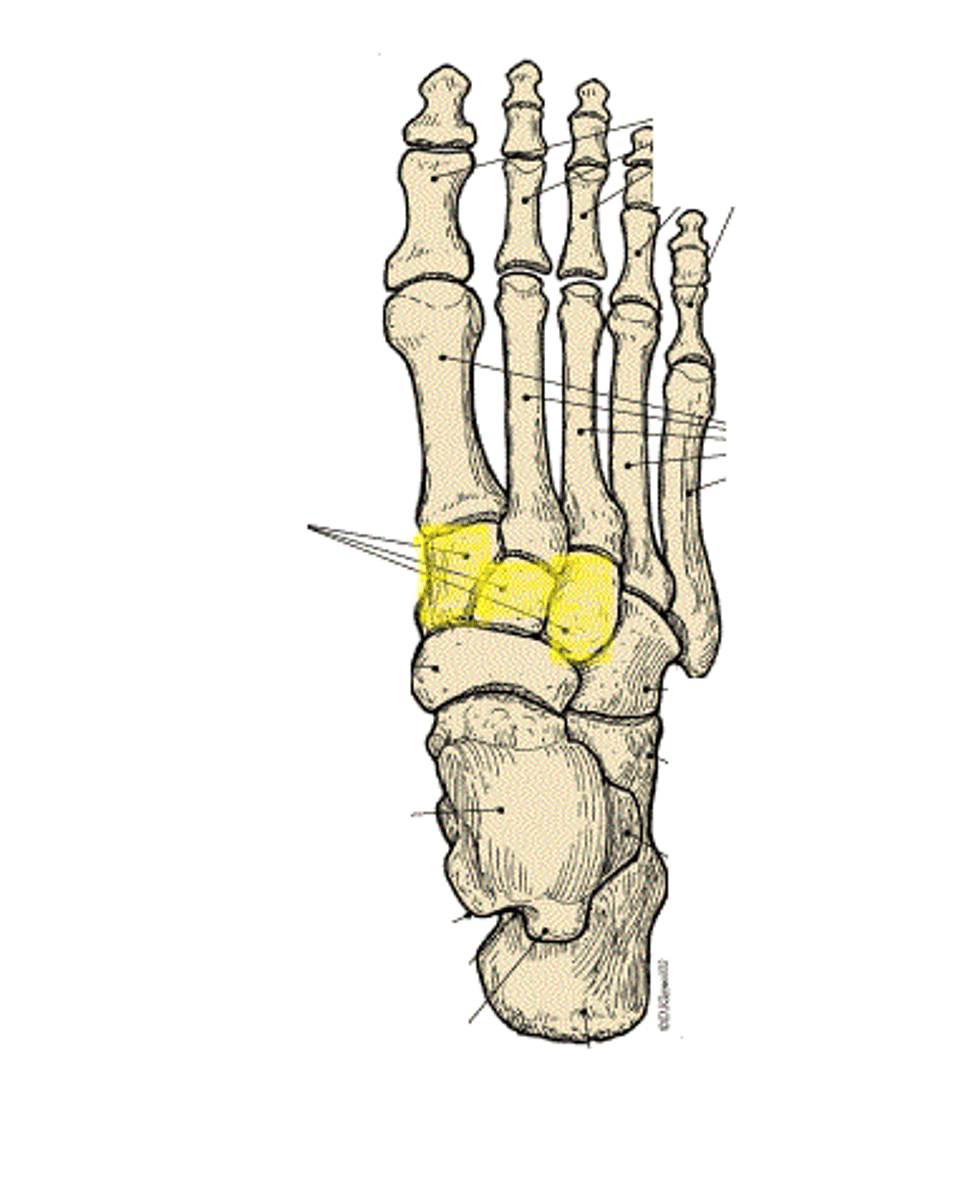Pelvic Girdle and Lower Limbs
1/28
There's no tags or description
Looks like no tags are added yet.
Name | Mastery | Learn | Test | Matching | Spaced |
|---|
No study sessions yet.
29 Terms
Pelvic girdle
Formed by two coxal bones, commonly called the hip bones, and the sacrum
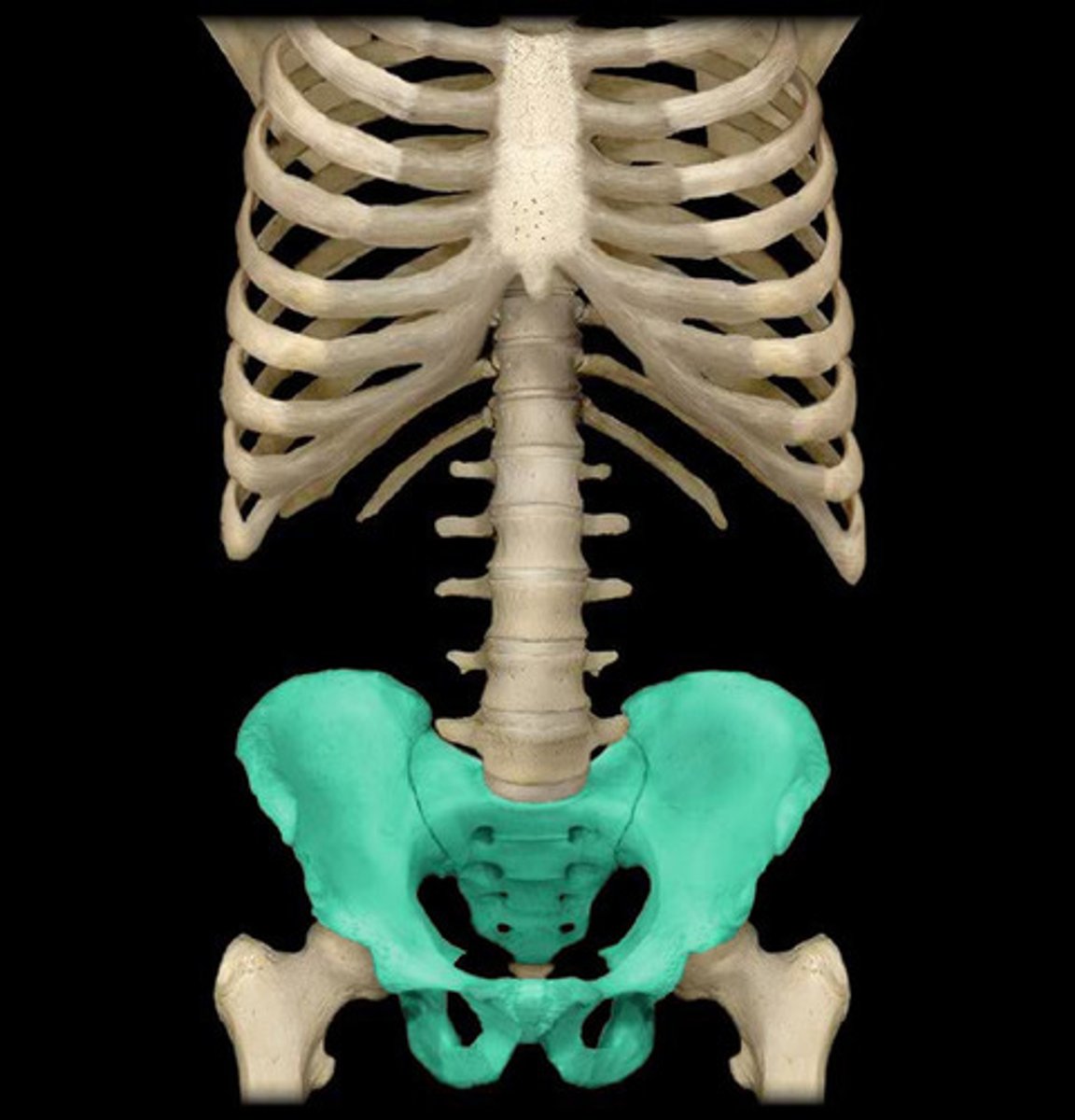
Ilium
large, flaring bone that forms most of the hip bone
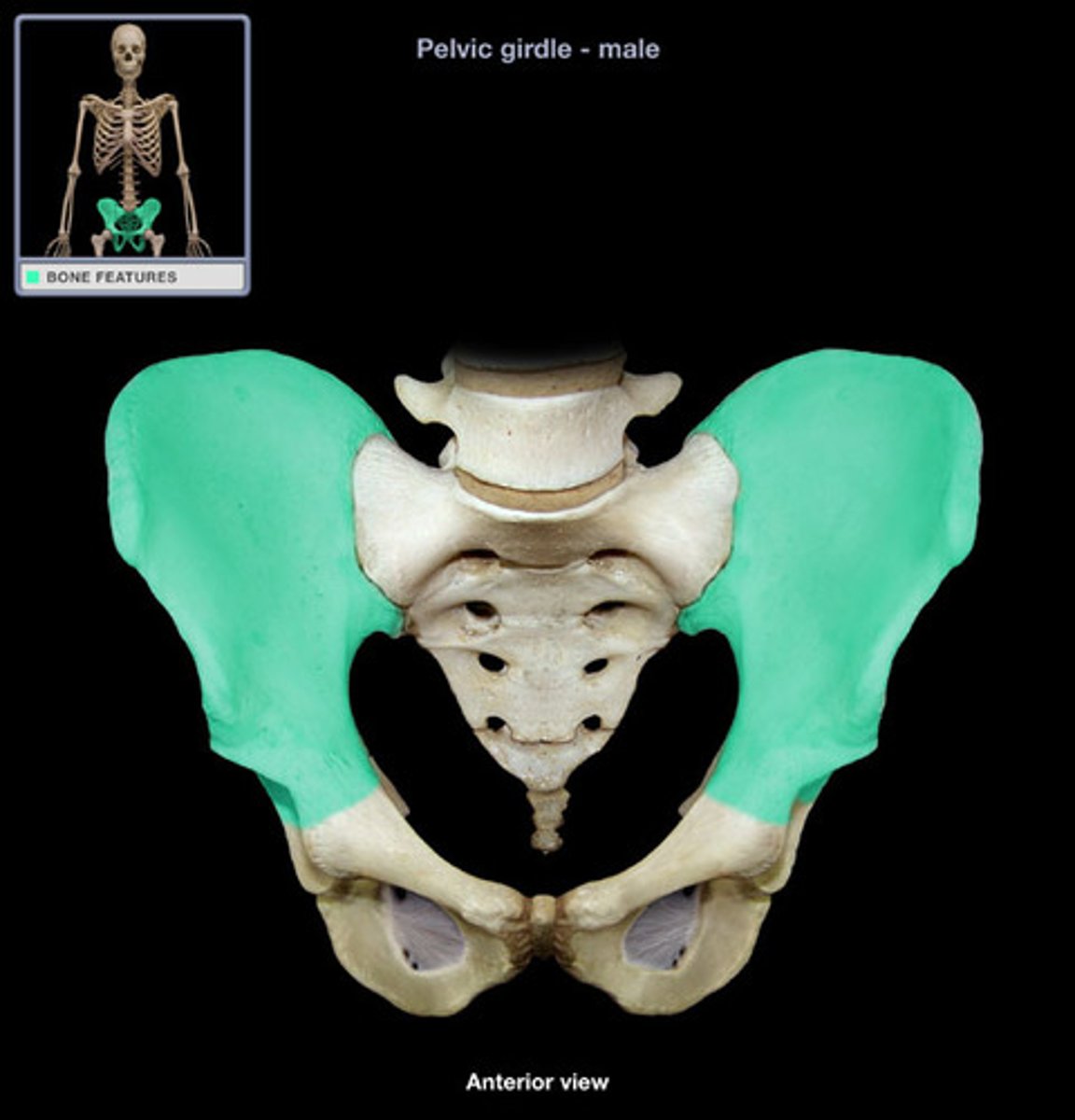
Sacroiliac joint
the joint between the sacrum and the ilium
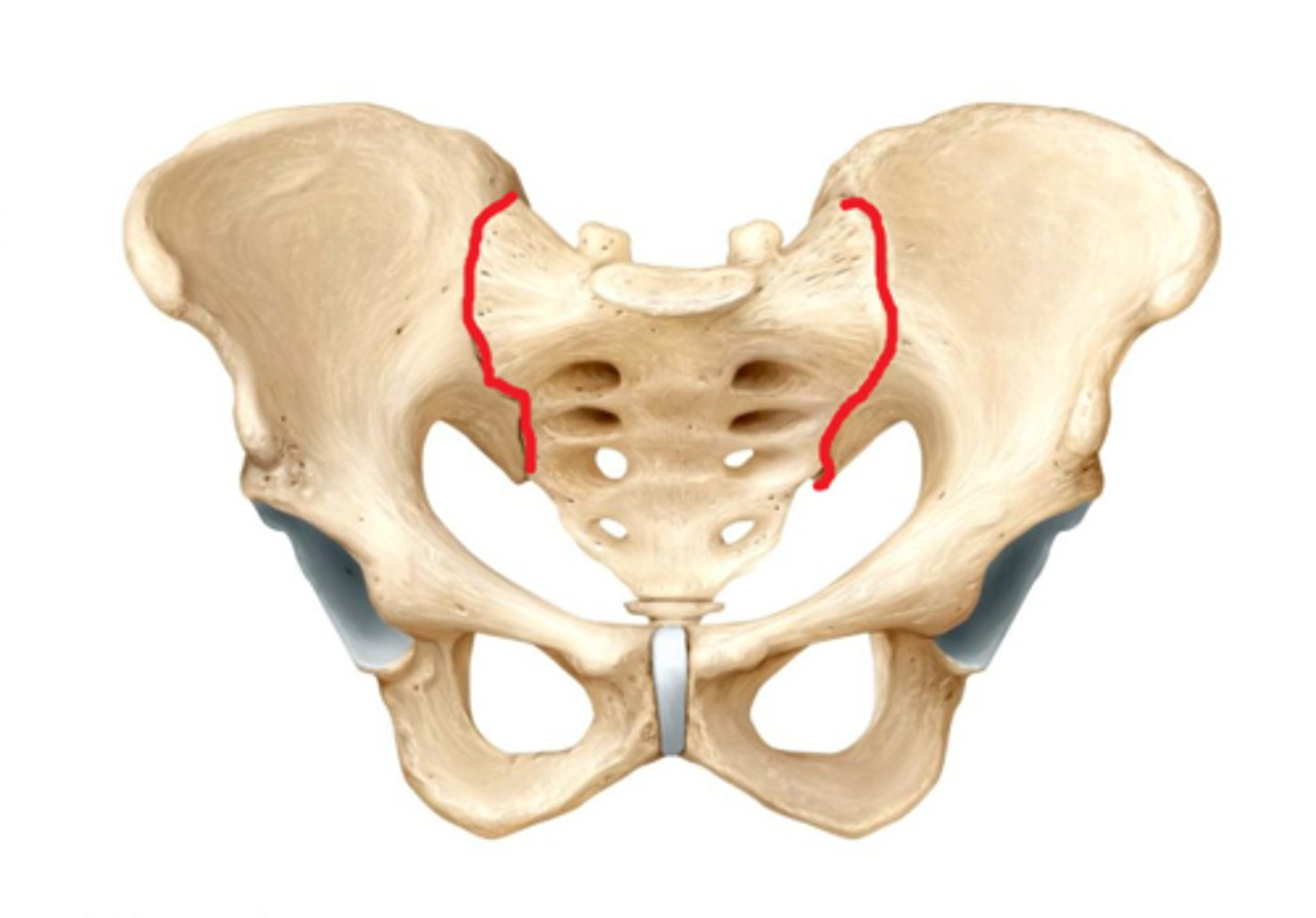
Iliac crest
upper margin of iliac bones
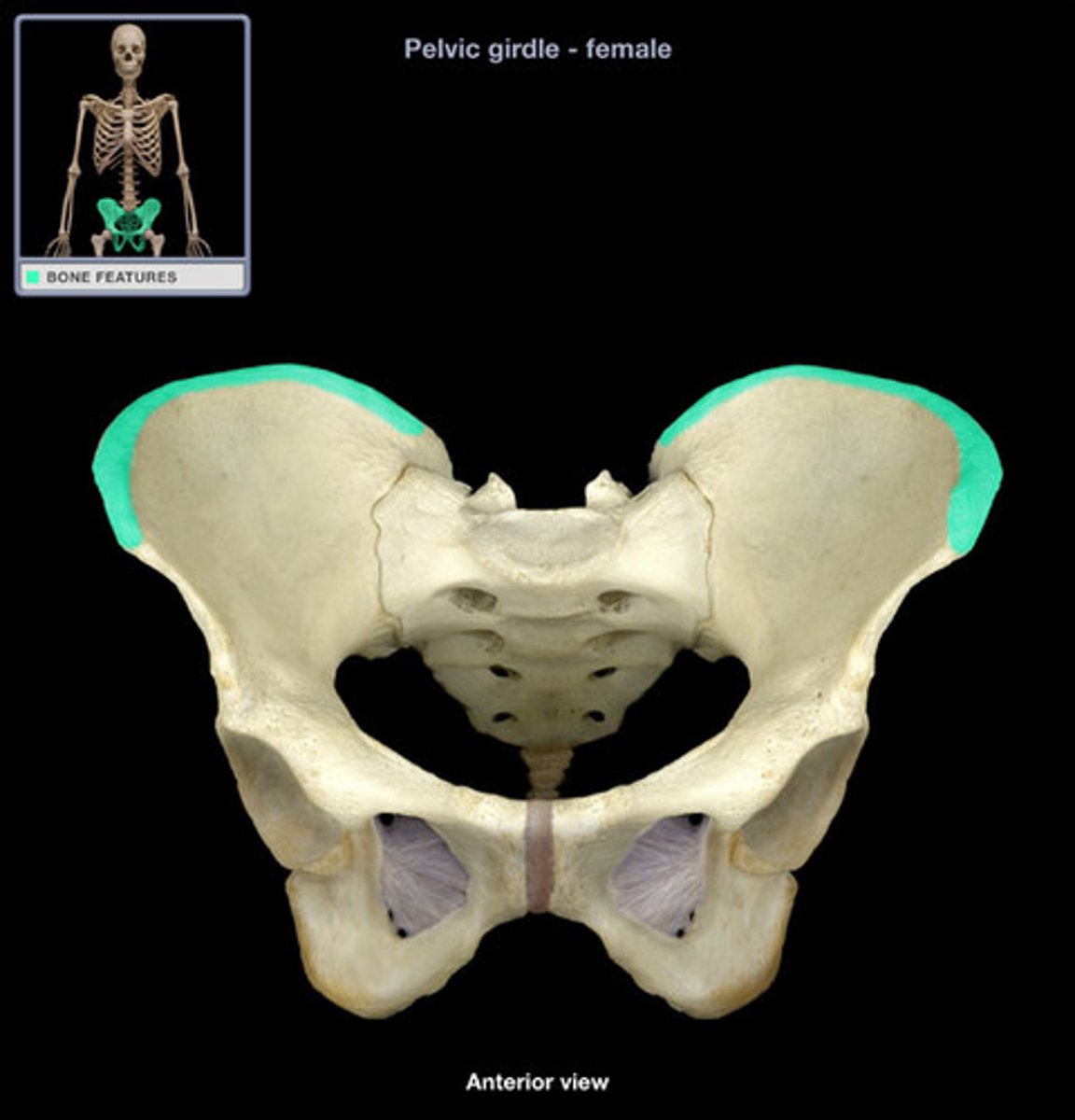
Anterior superior iliac spine
the iliac crest ends anteriorly in this
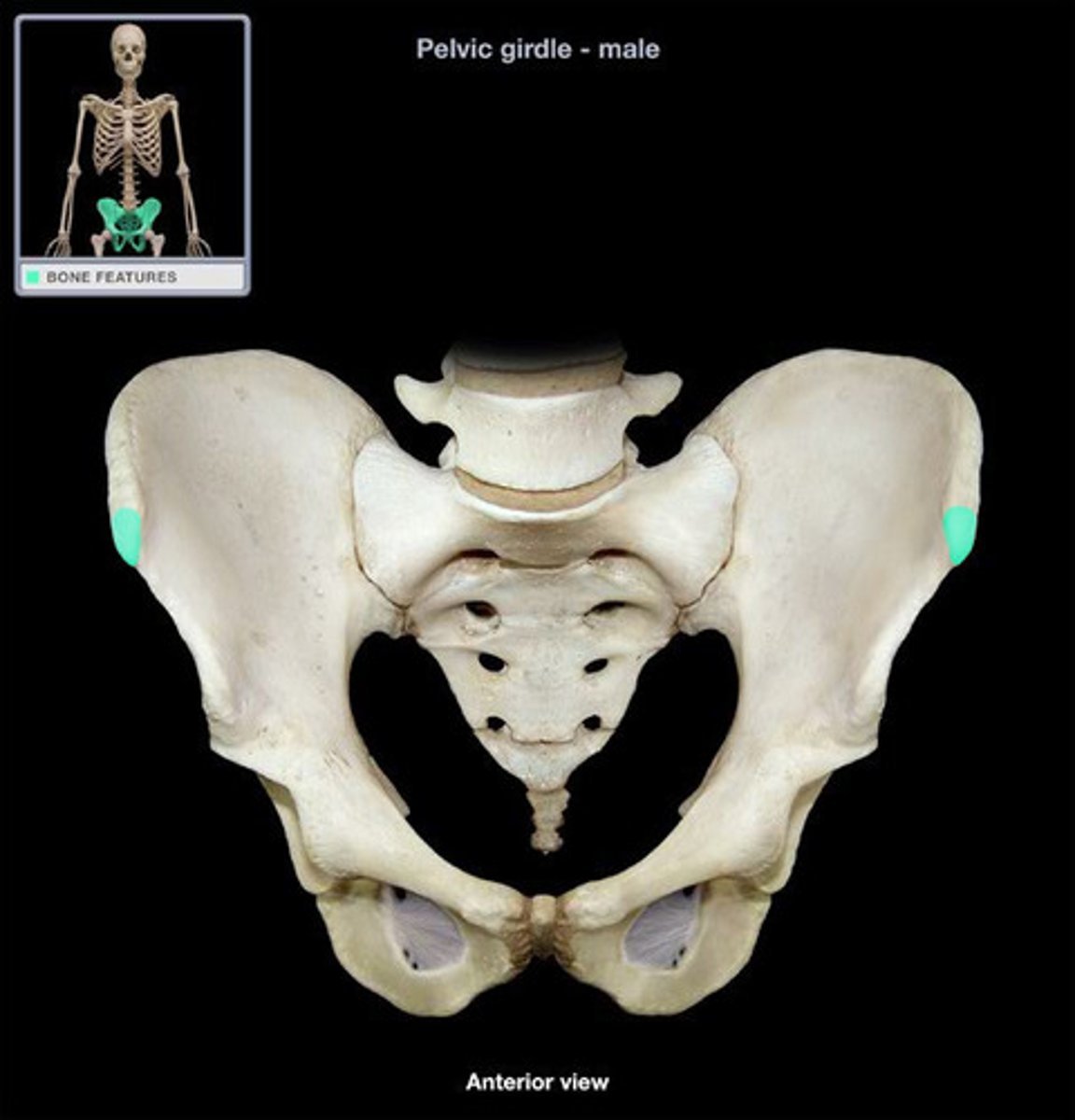
Ischium
the "sit-down bone", most inferior part of the coxal bone
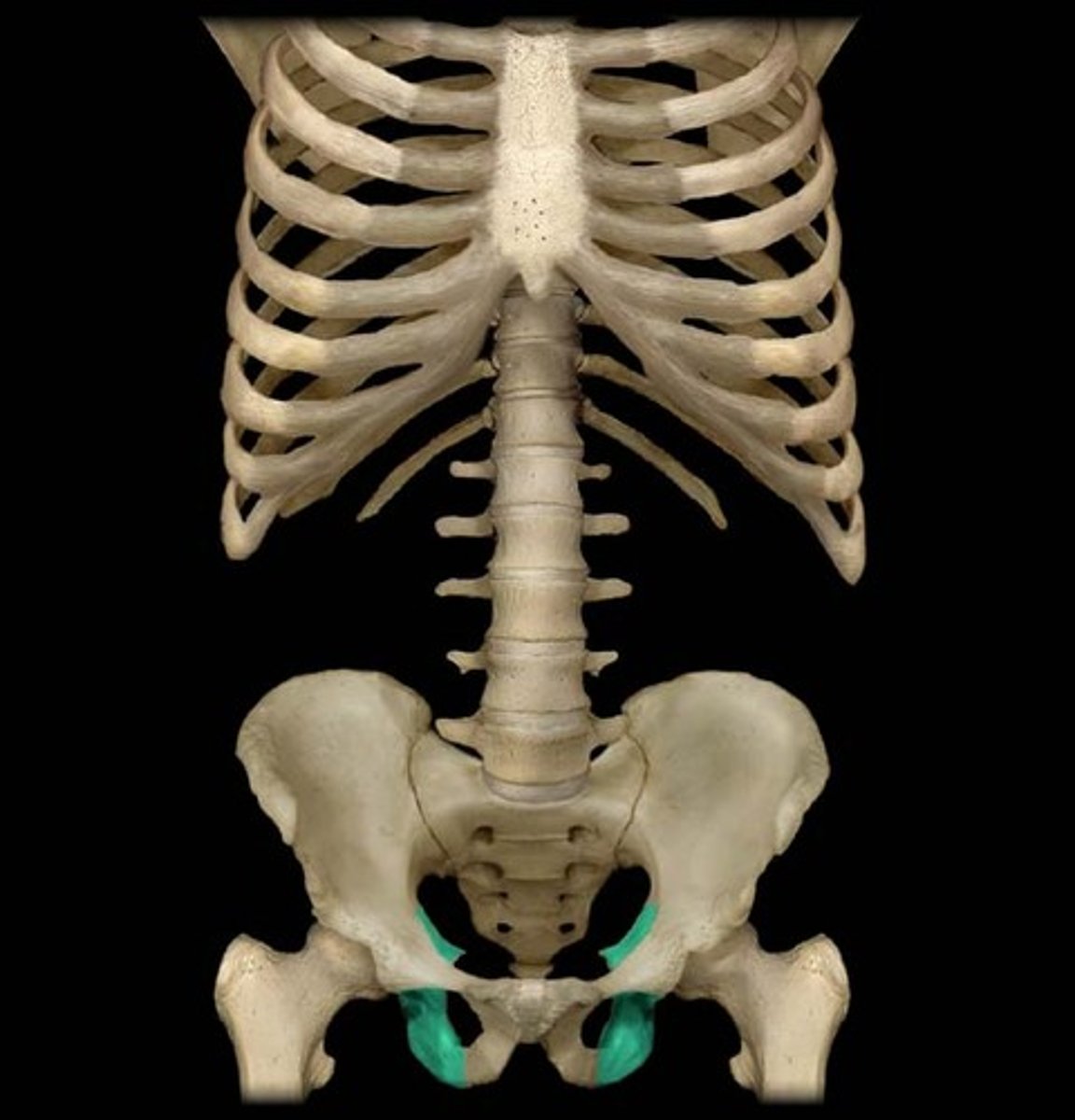
Ischial tuberosity
receives the weight of the body when sitting
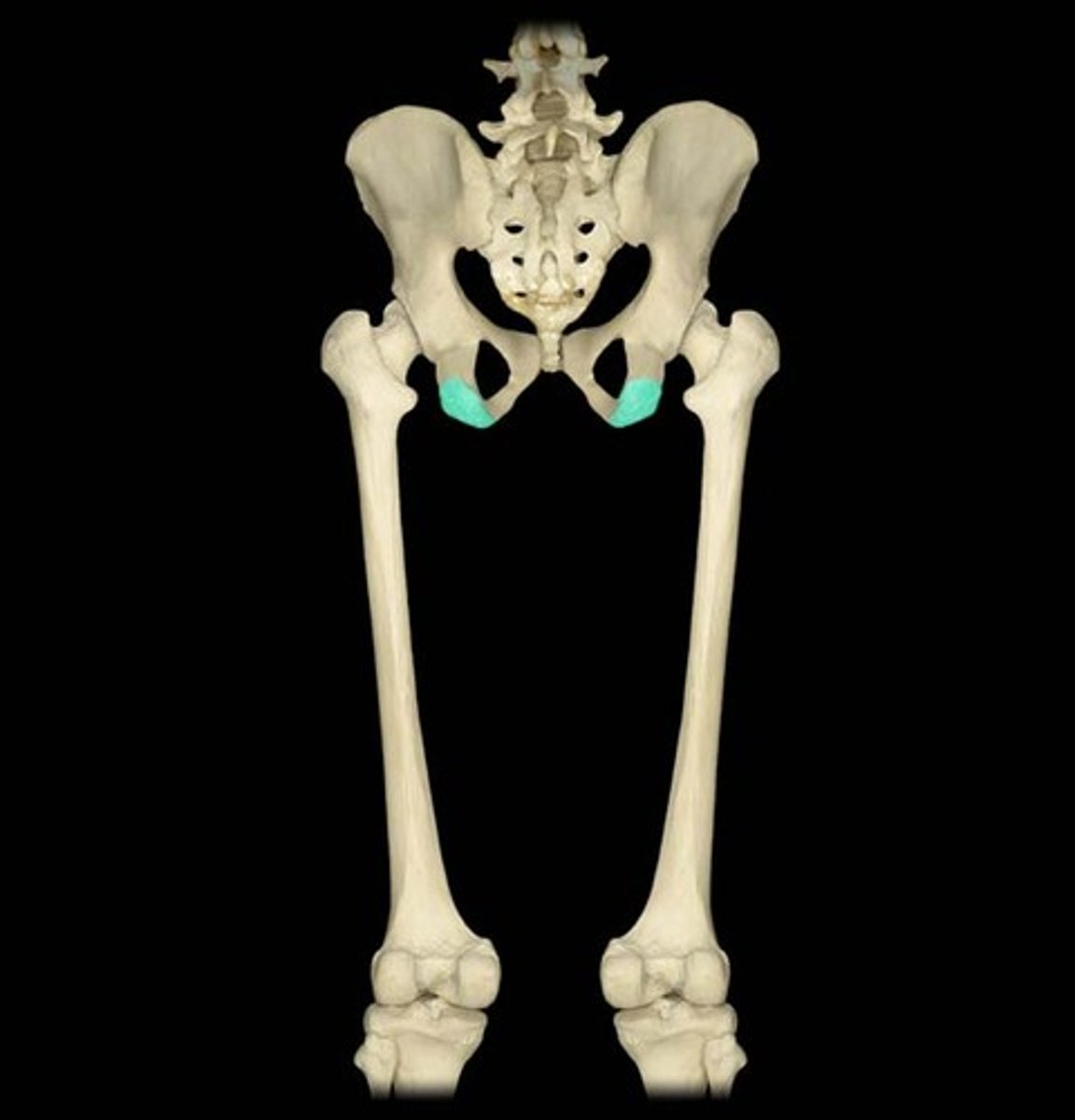
Greater sciatic notch
allows blood vessels and the large sciatic nerve to pass from the pelvis posteriorly into the thigh
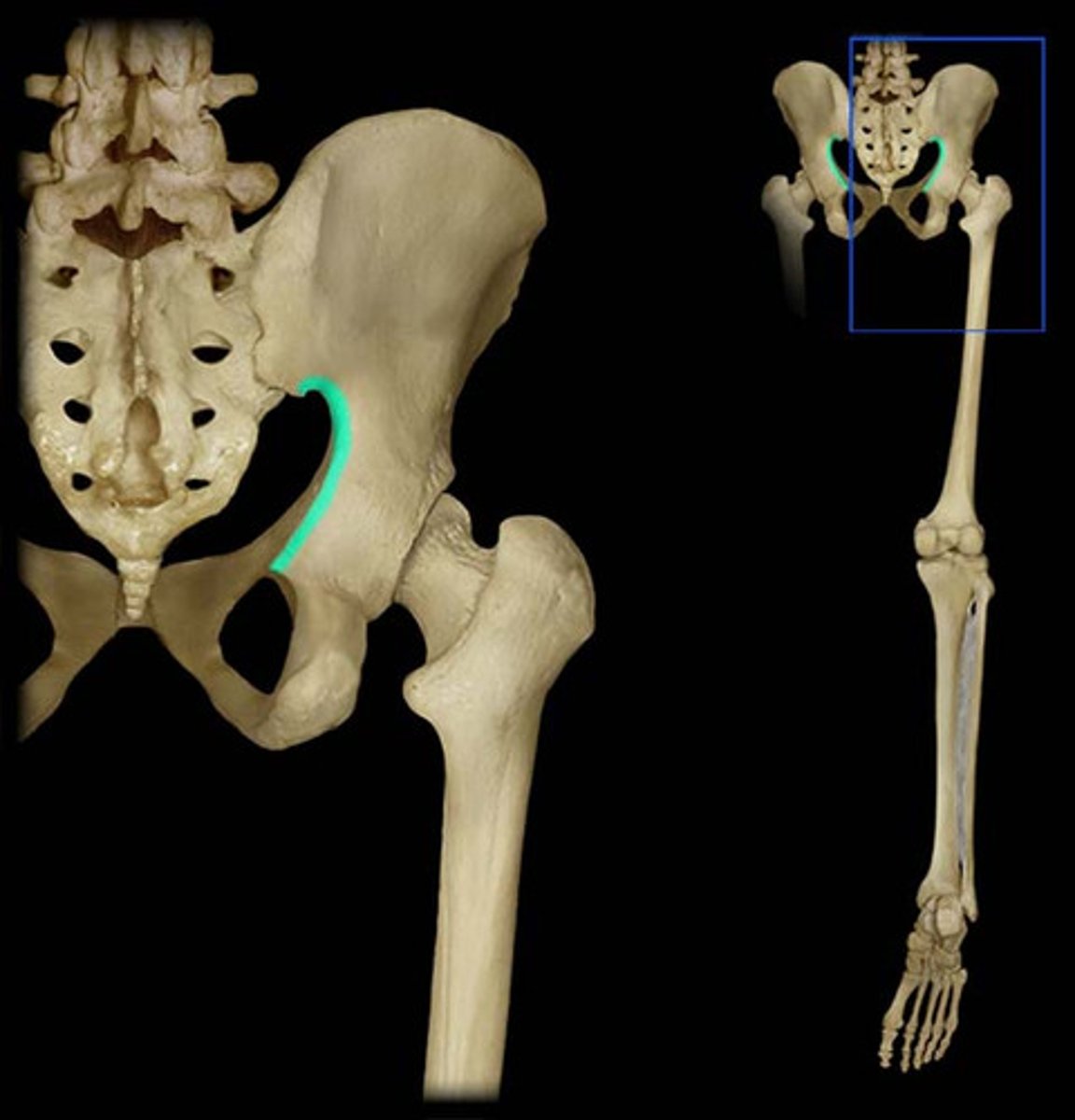
Pubis
most anterior part of the coxal bone
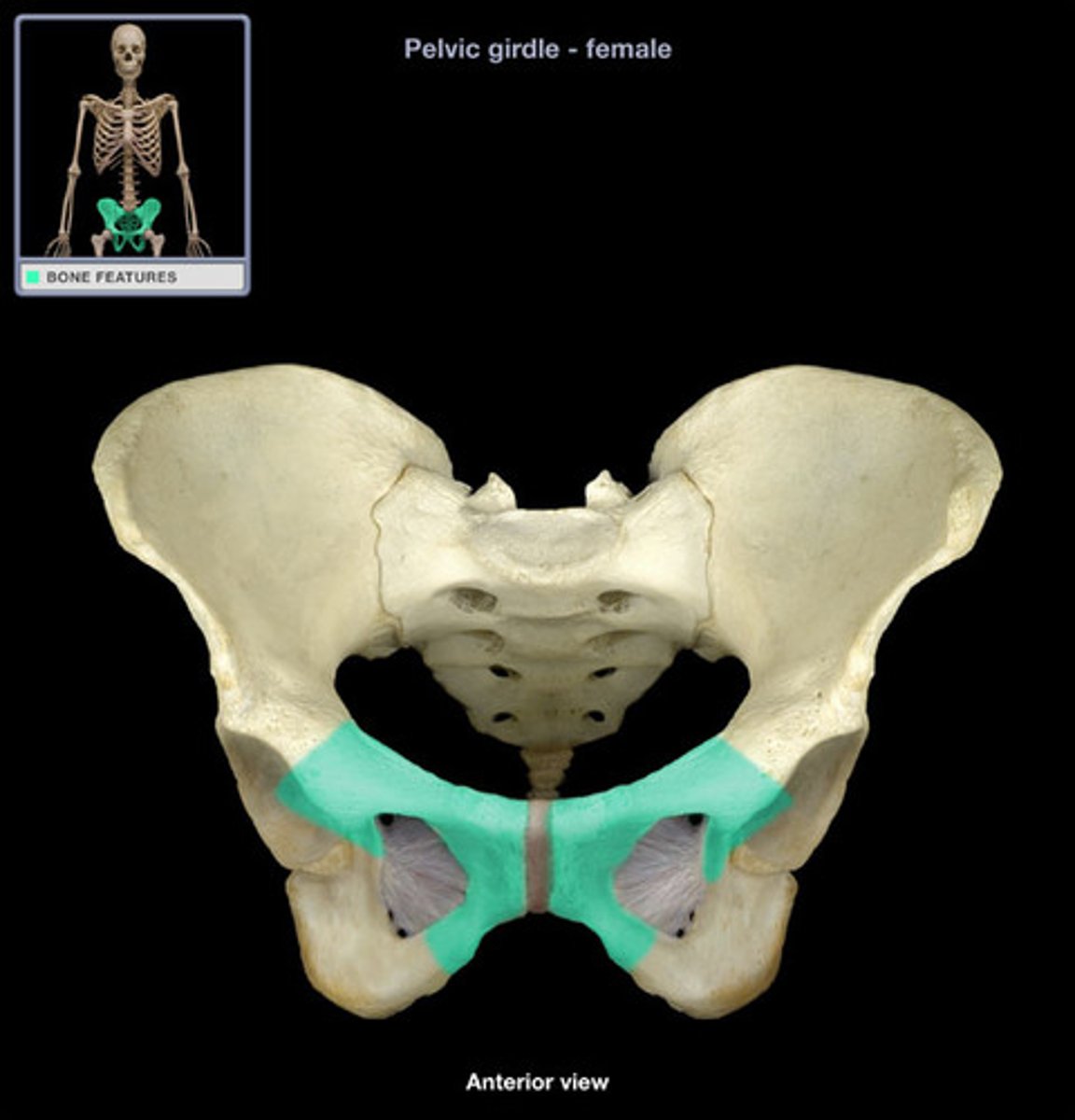
Acetabulum
large socket in the pelvic bone for the head of the femur
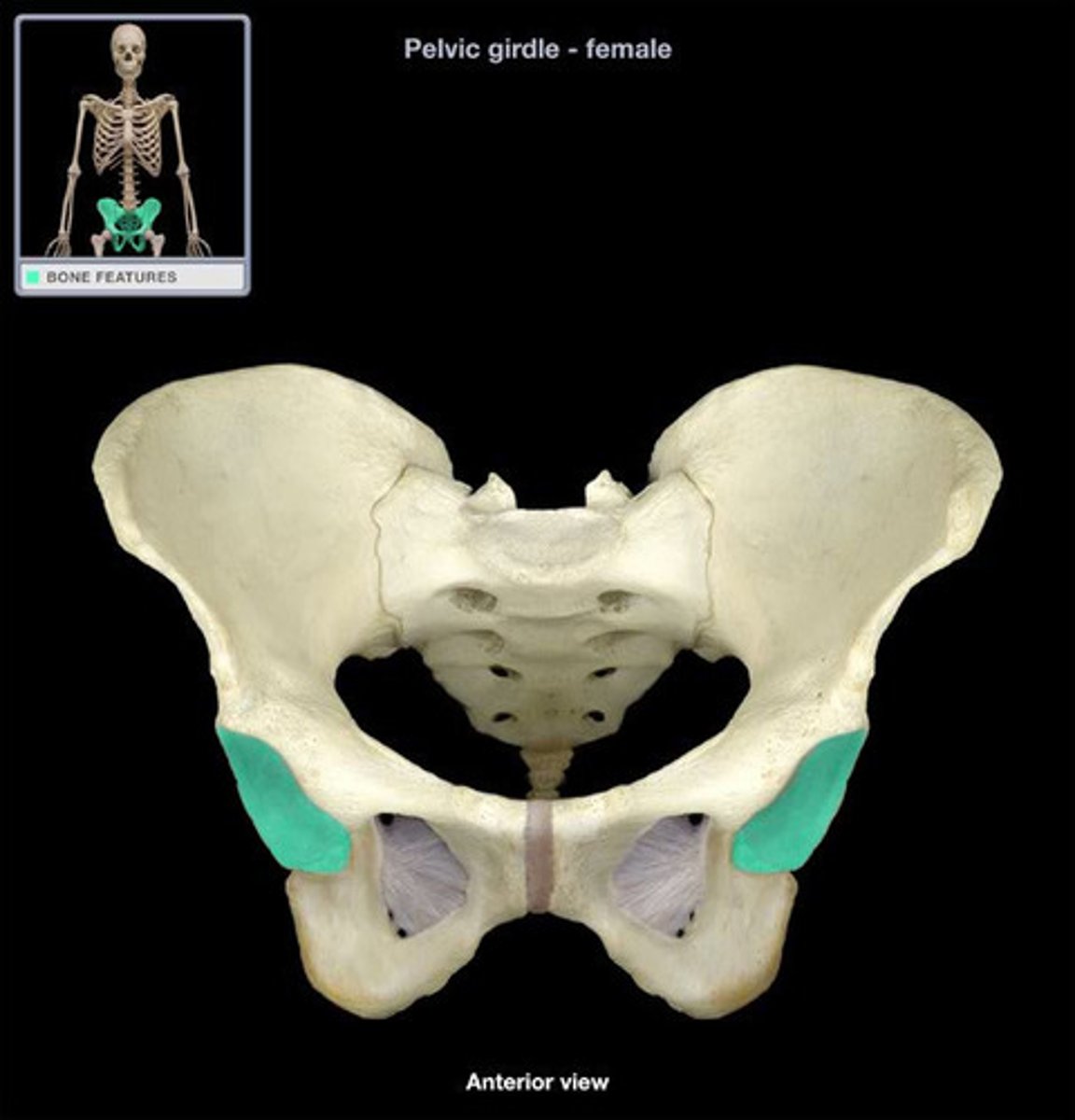
Pelvic outlet
inferior opening of the pelvis measured between ischial spines
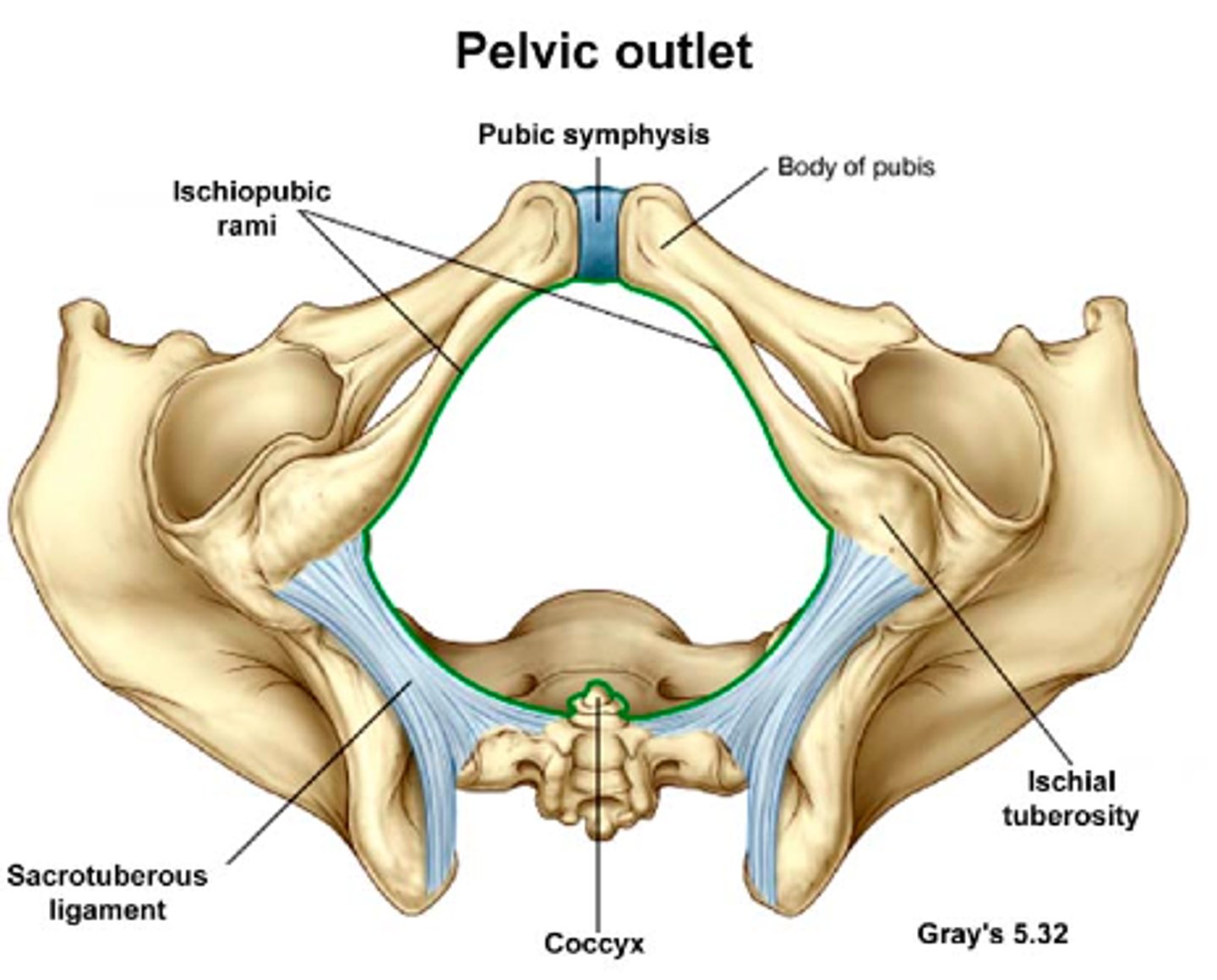
femur
heaviest, strongest bone in the body; thigh bone
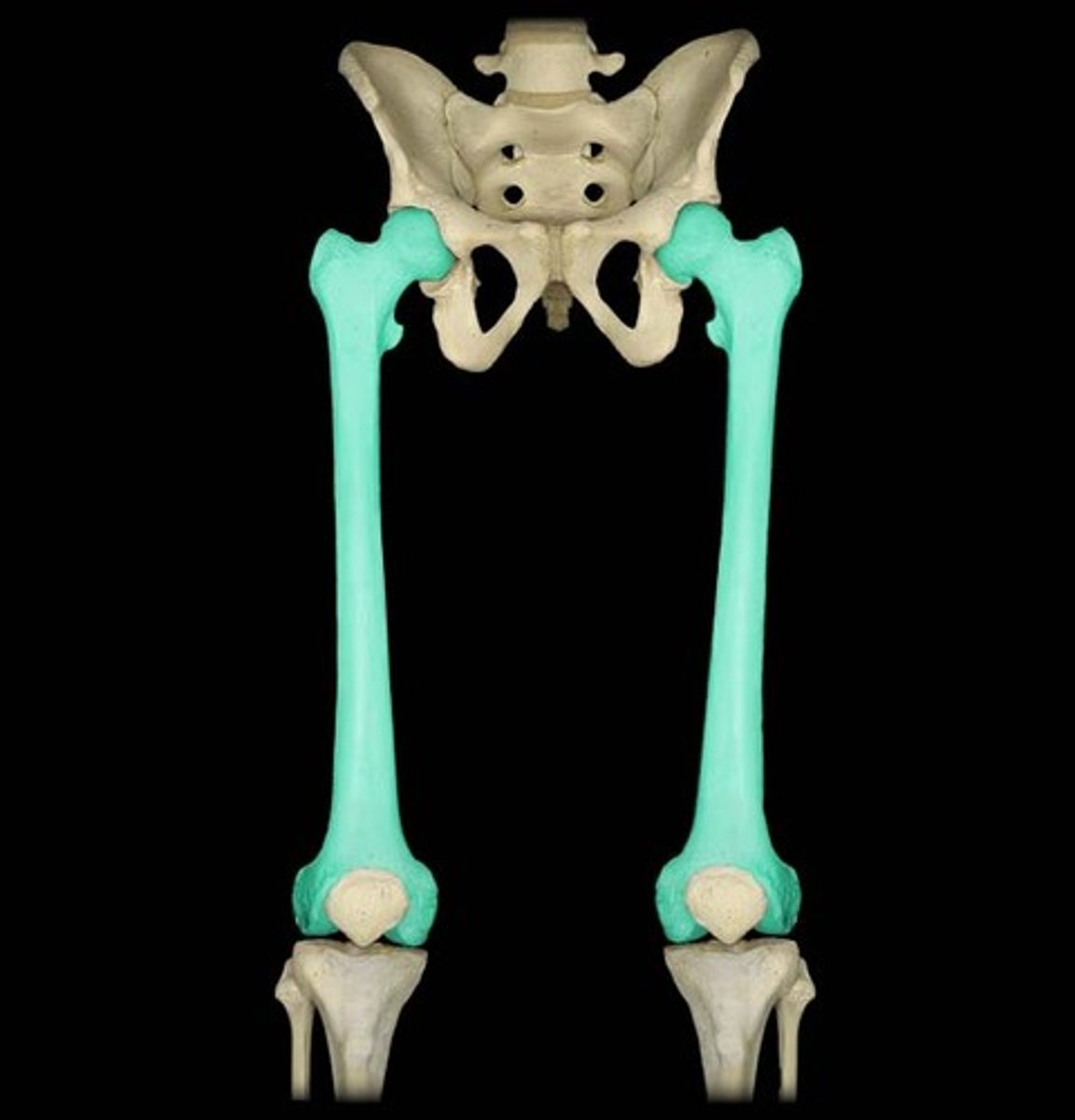
greater and lesser trochanter
sites of muscle attachment on the proximal end of the femur
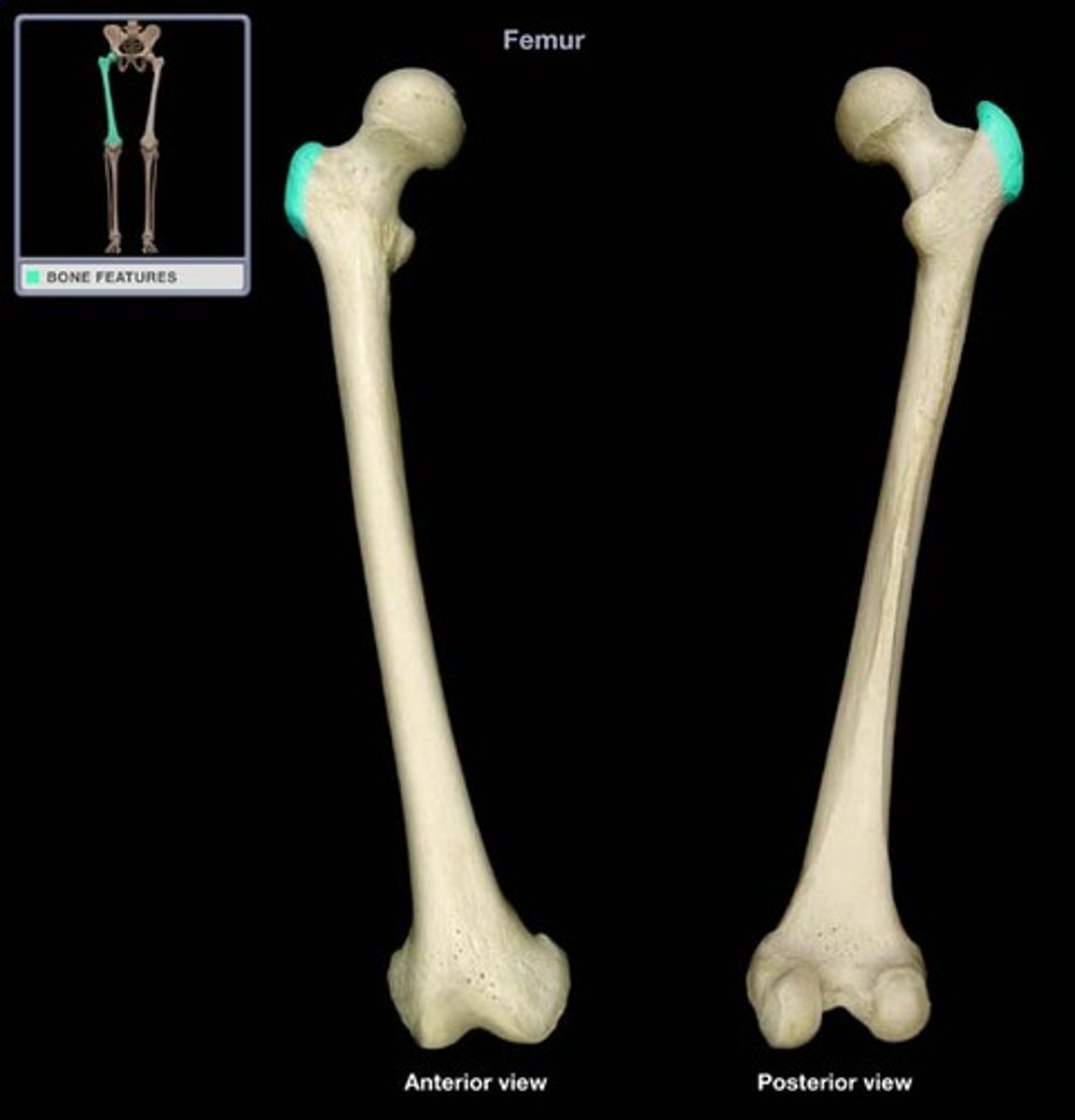
lateral and medial condyles of femur
articulate with the tibial head to form knee joint
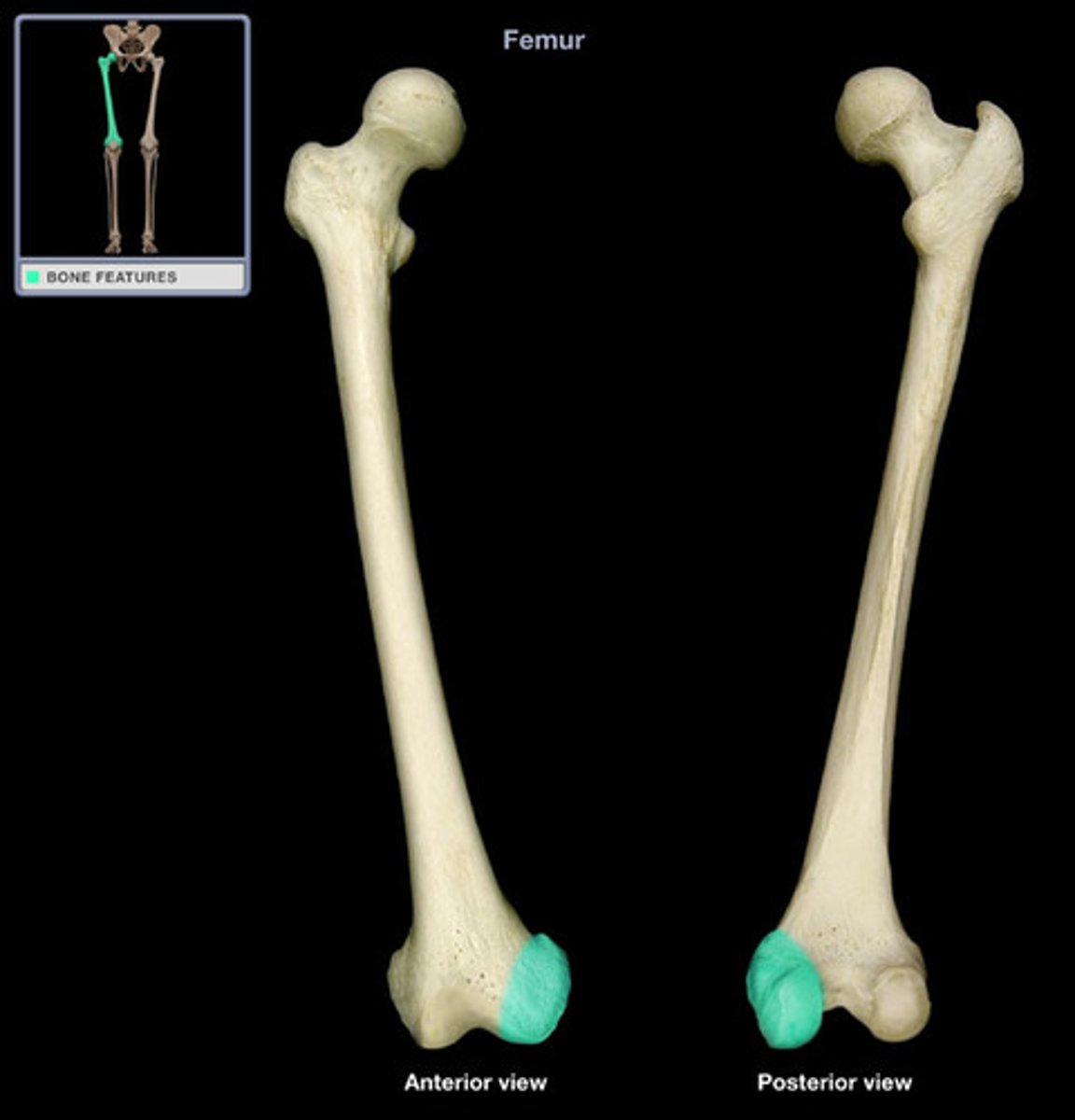
tibia
the medial and larger bone of the lower leg; shinbone
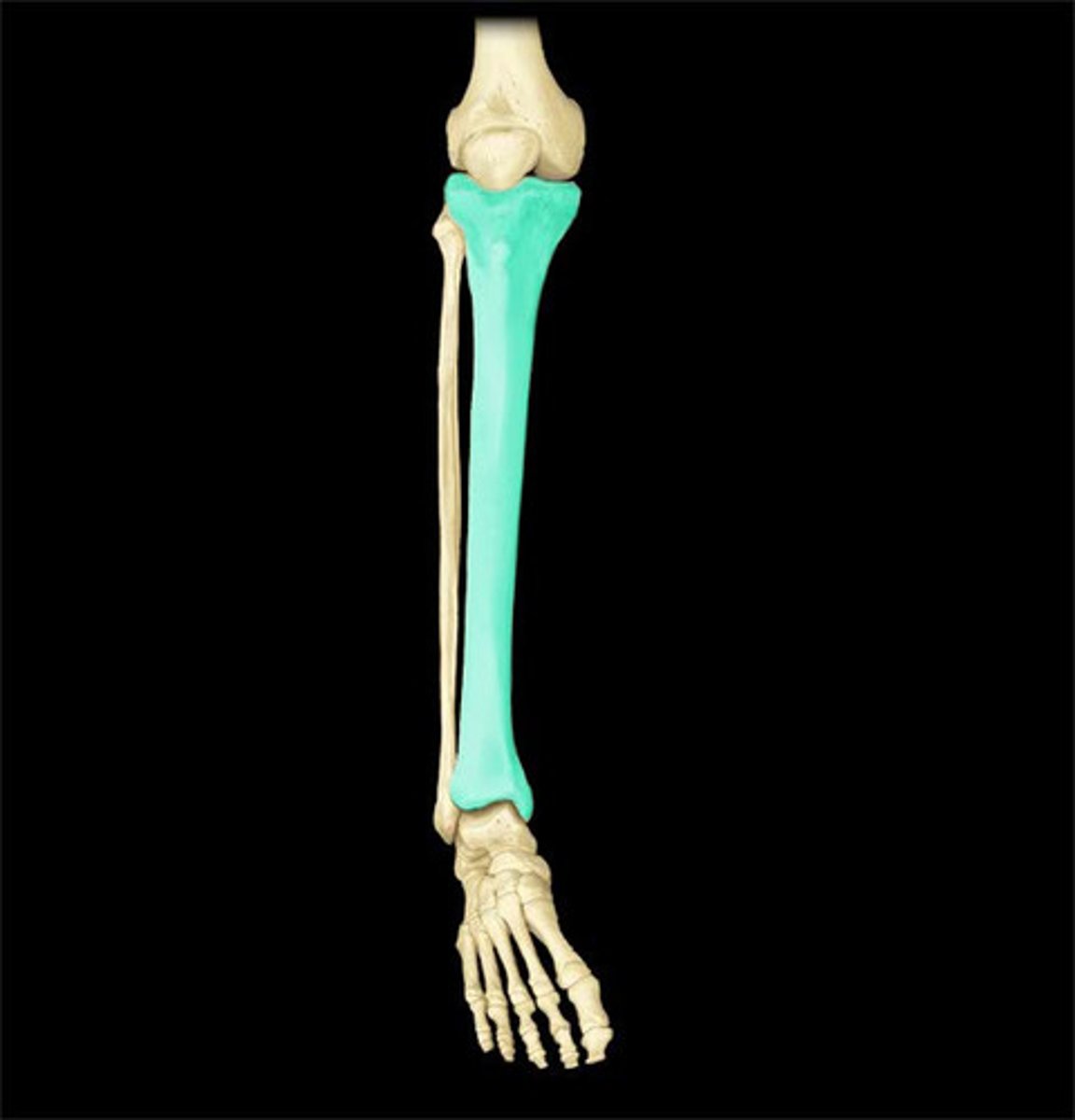
medial and lateral condyles of the tibia
articulate with femur to form the knee joint
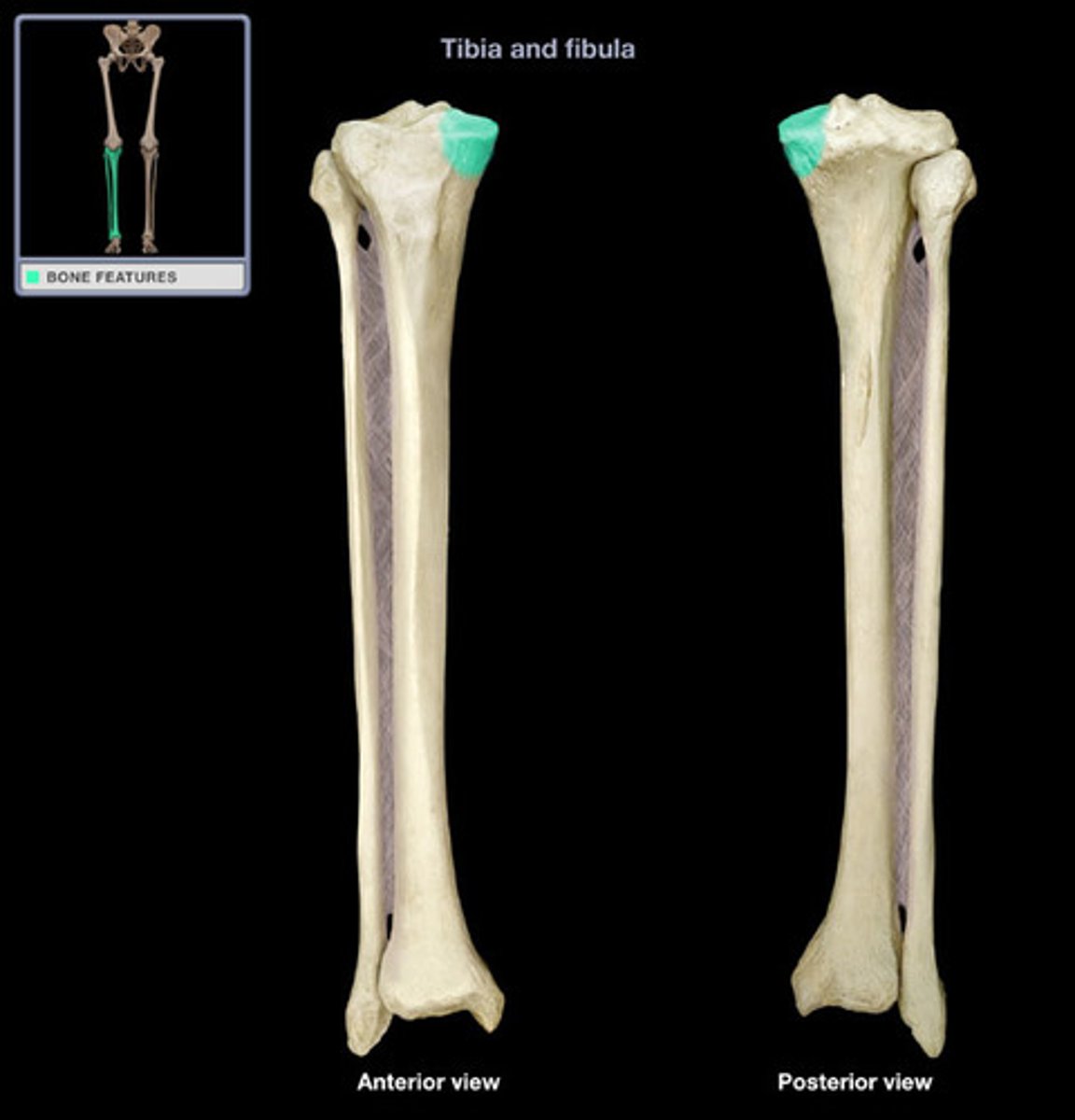
patella
kneecap
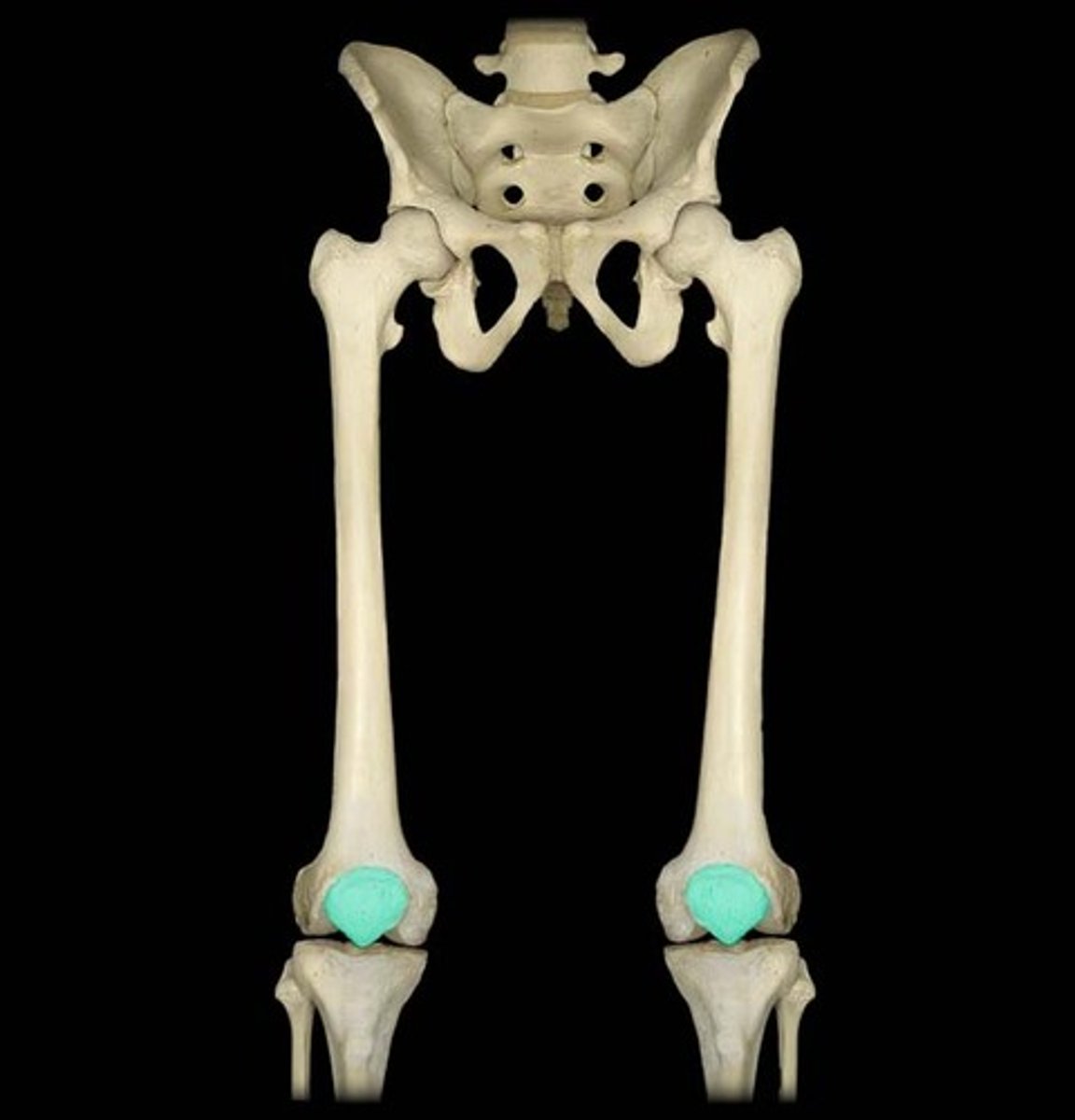
tibial tuberosity
knob on the anterior tibial surface where the patellar ligament attaches
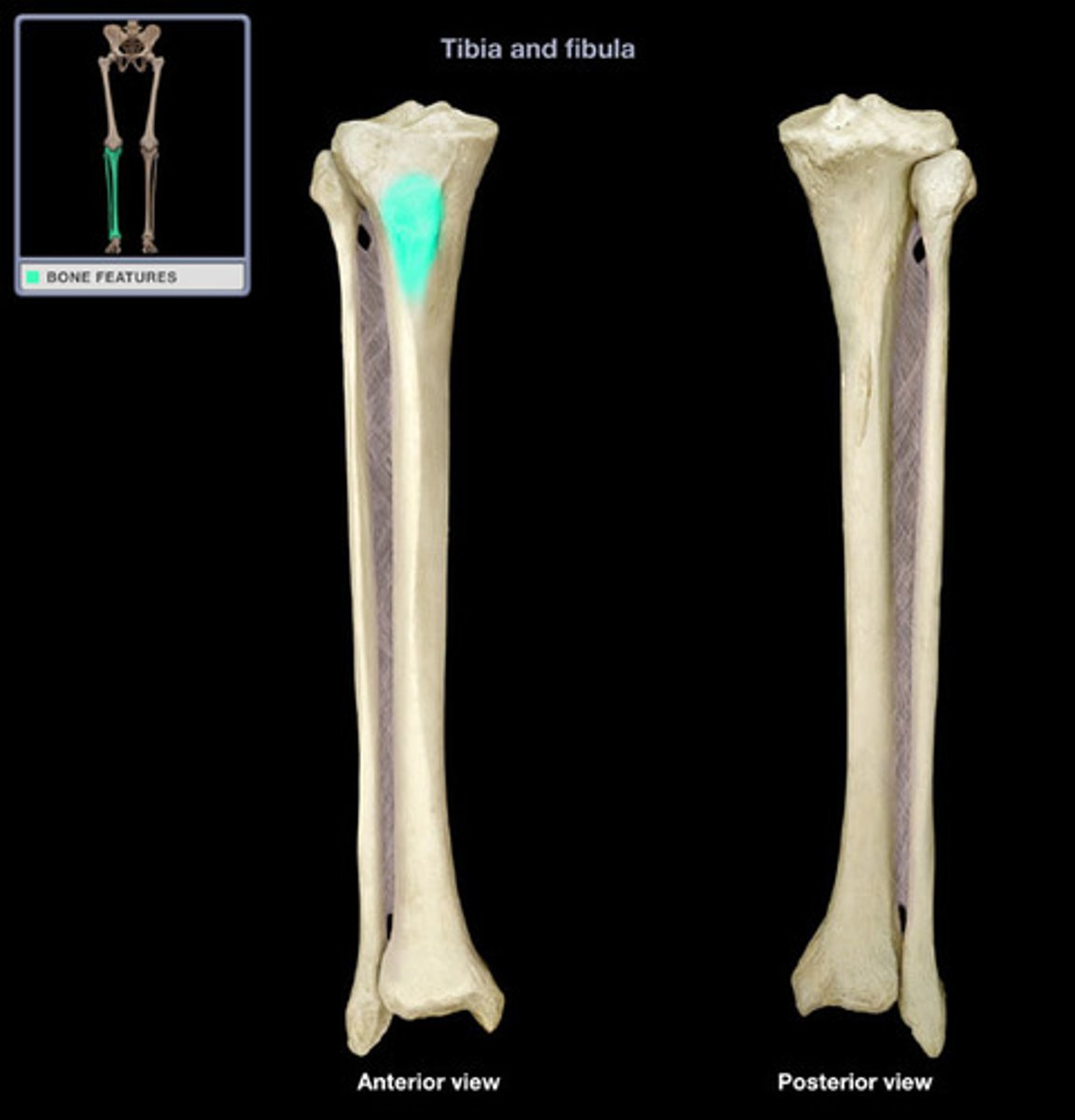
medial mallelous
Bony protrusion on the inner side of ankle (tibia)
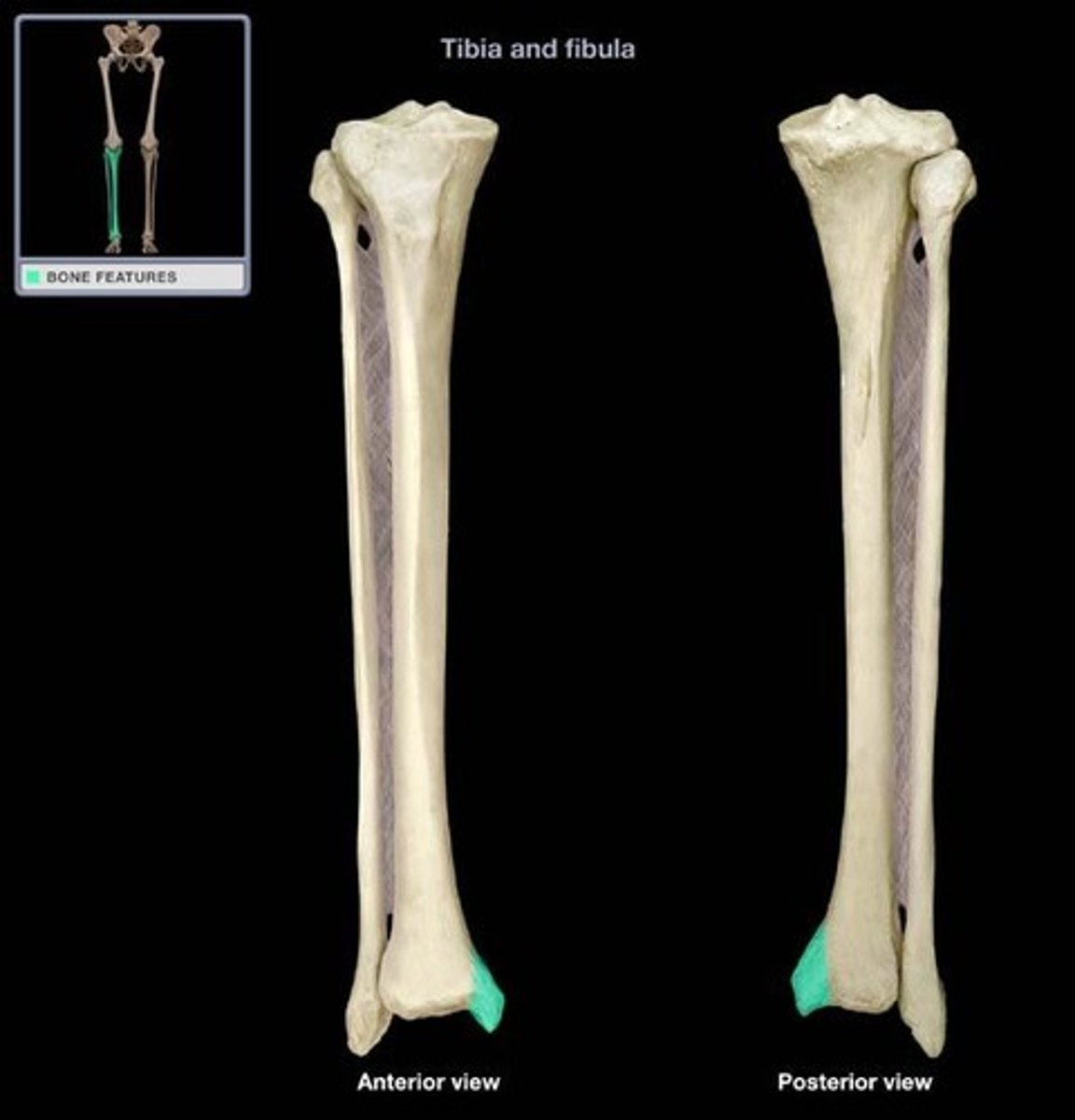
fibula
The lateral and smaller bone of the lower leg; thin and sticklike
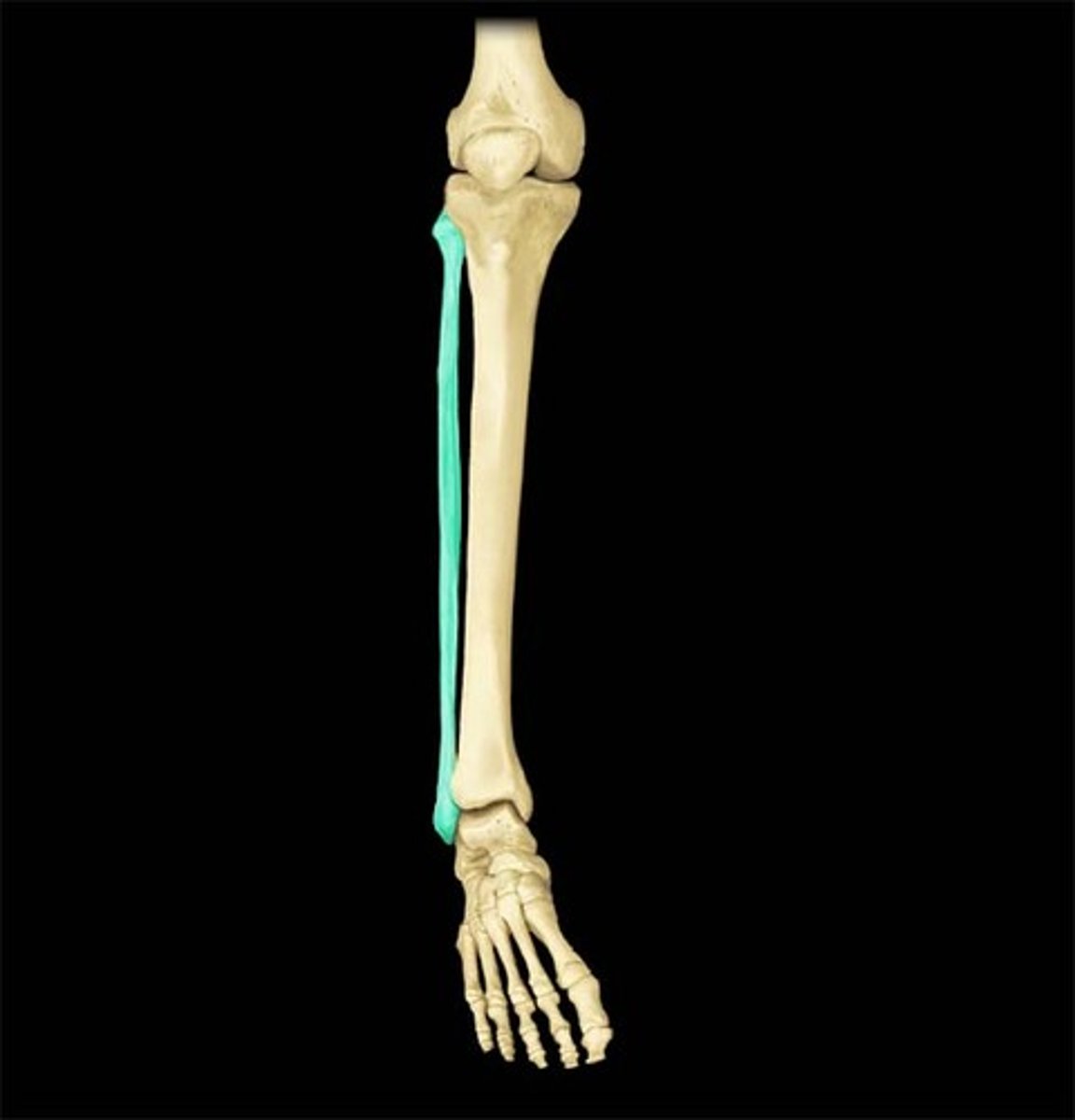
lateral malleolus
Bony protrusion on the outer side of ankle (fibula)
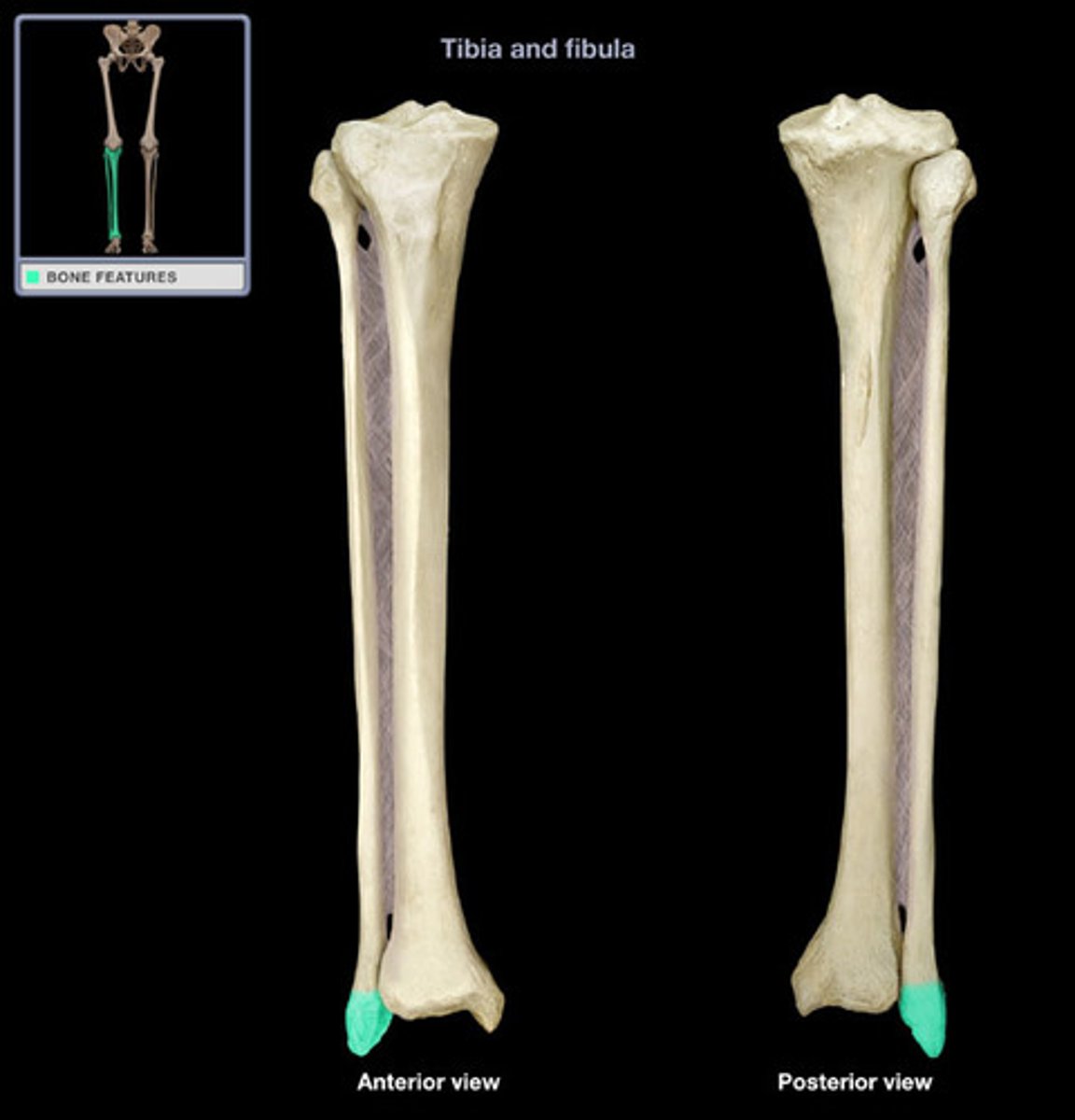
tarsal bones
the seven bones of the ankle
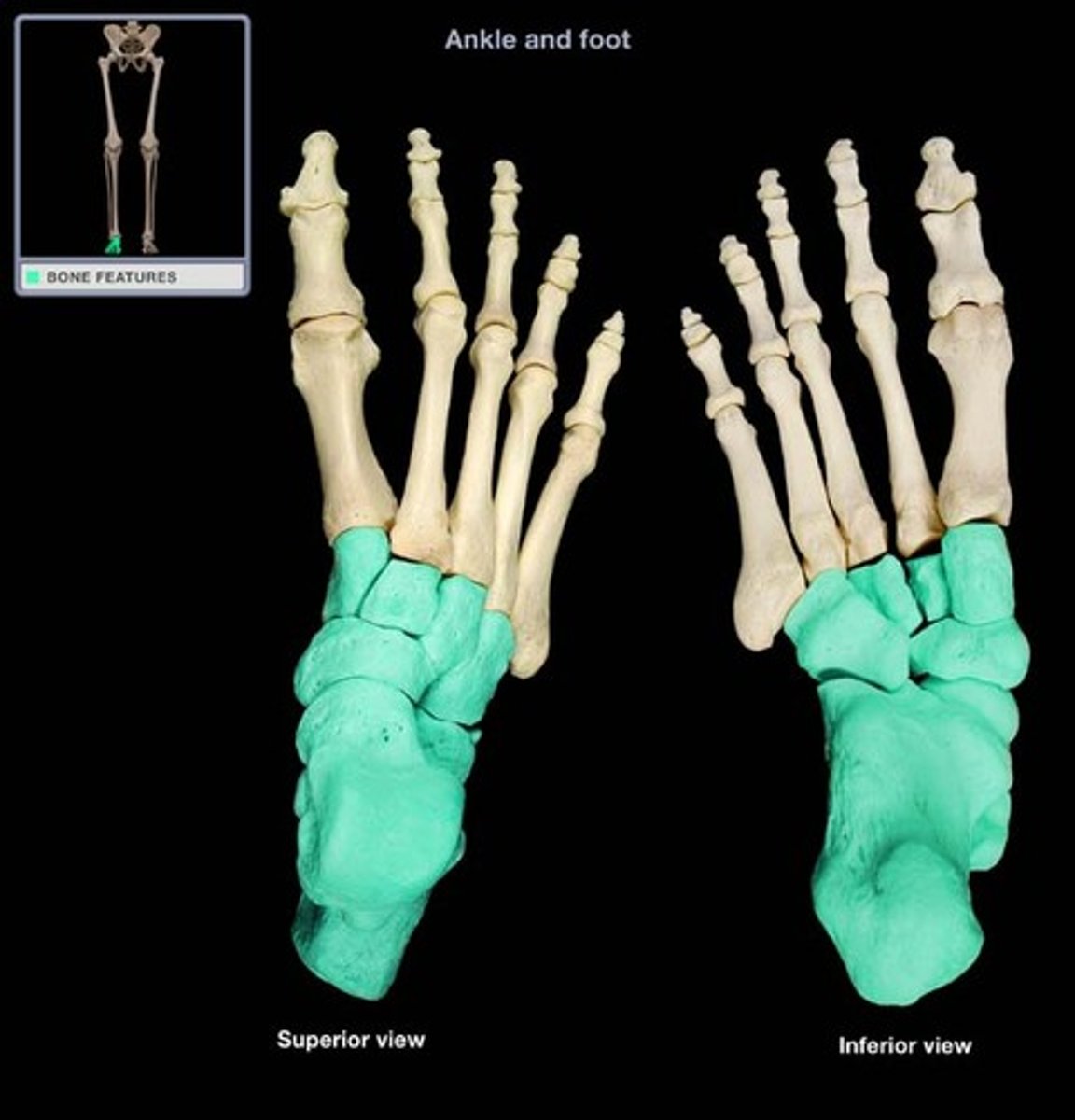
calcaneus
heel bone; largest of the tarsal bones
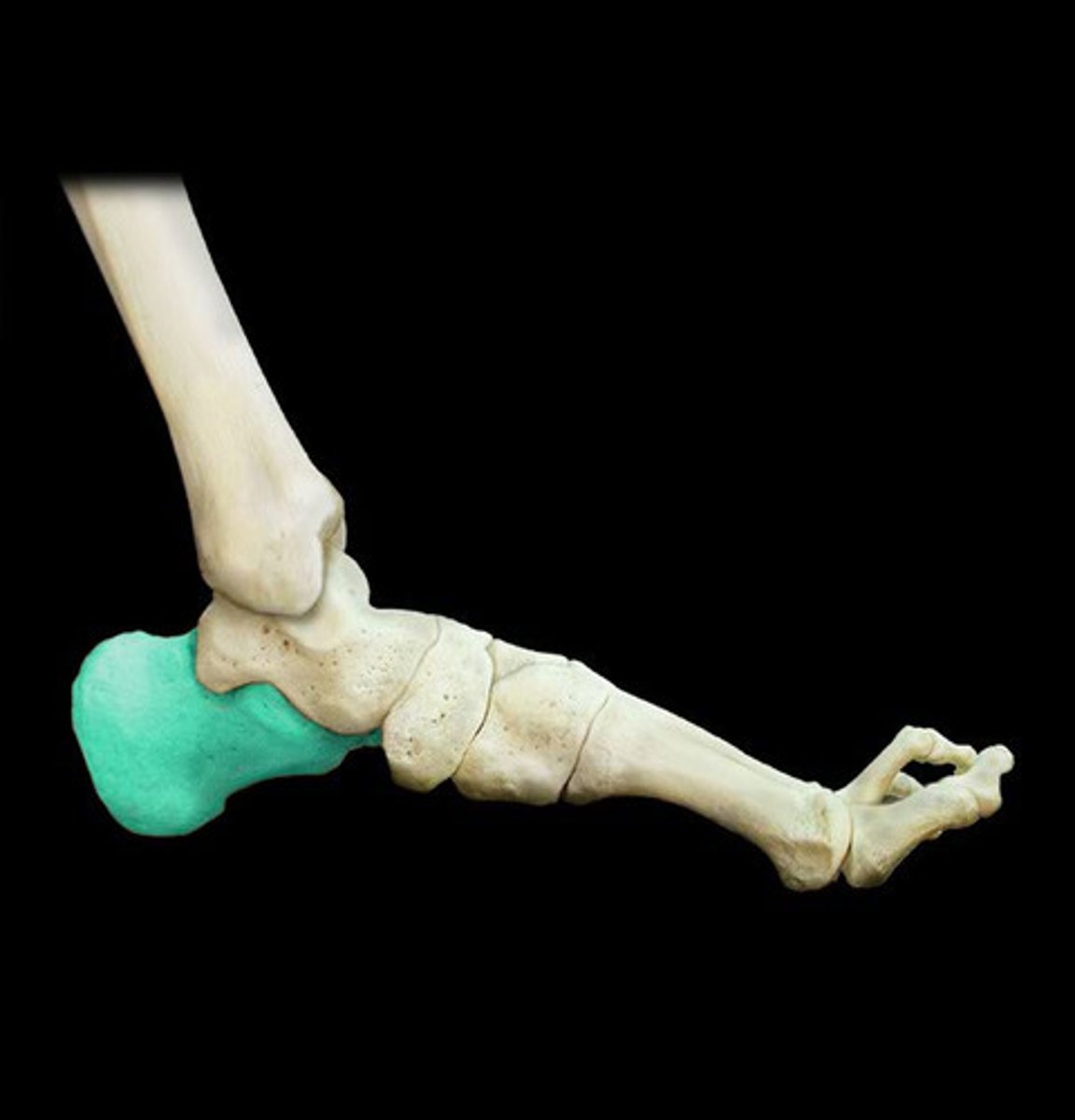
talus
Ankle bone, articulates with tibia and fibula
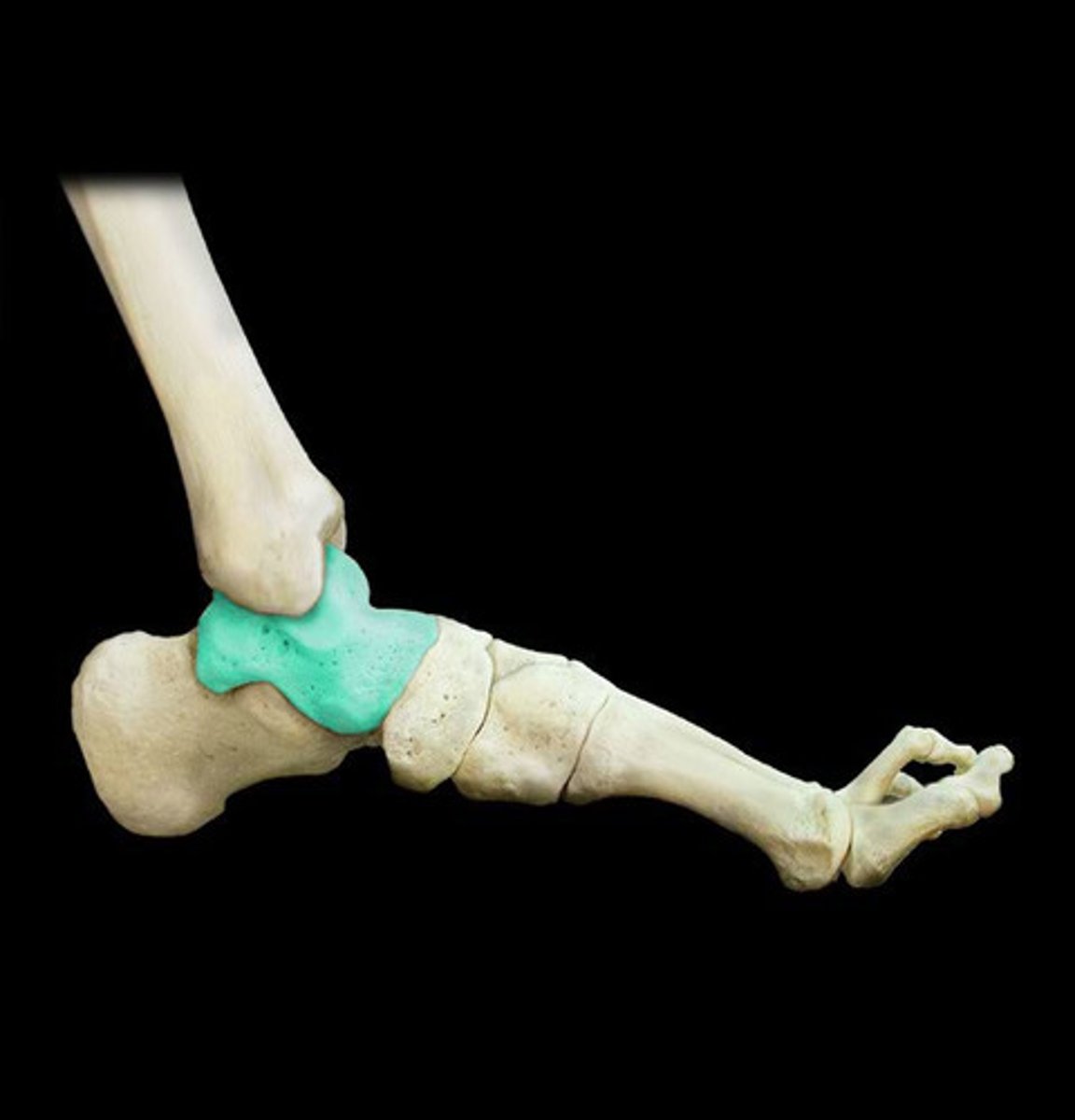
metatarsals
form the sole of the foot
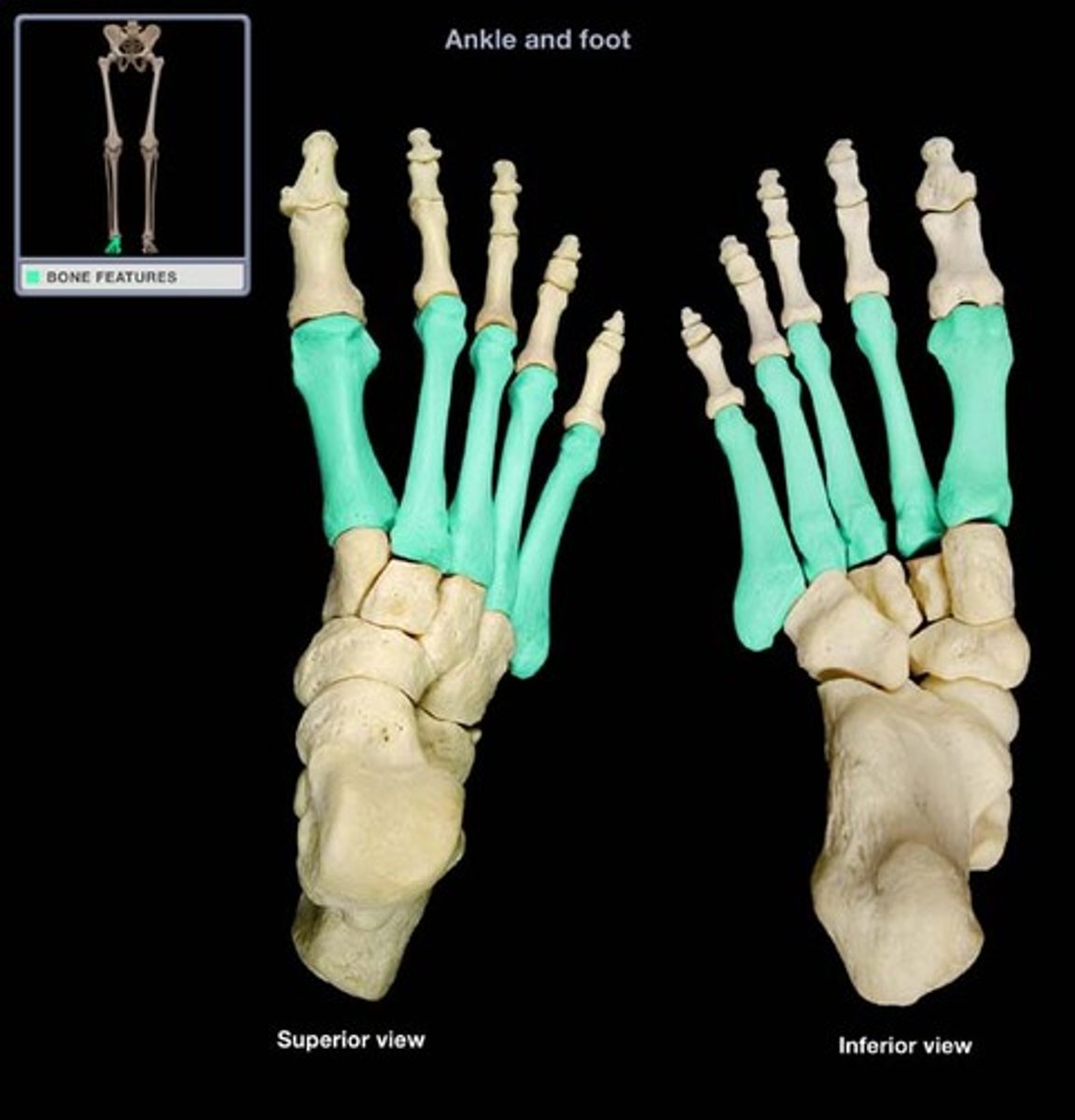
phalanges (foot)
14 bones of toes; hallux (great toe) has two bones the rest have three bones
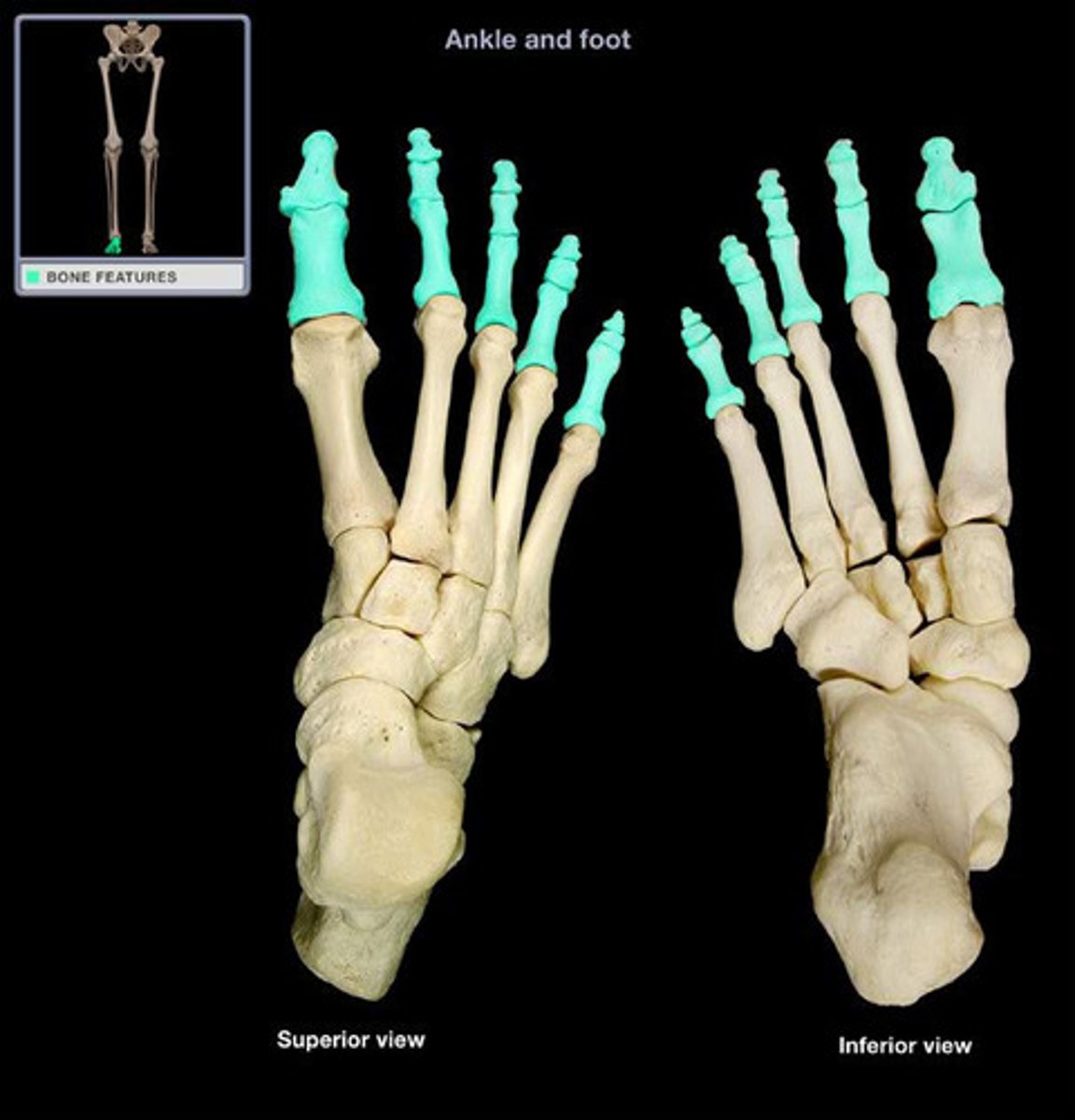
navicular
Name the bone.
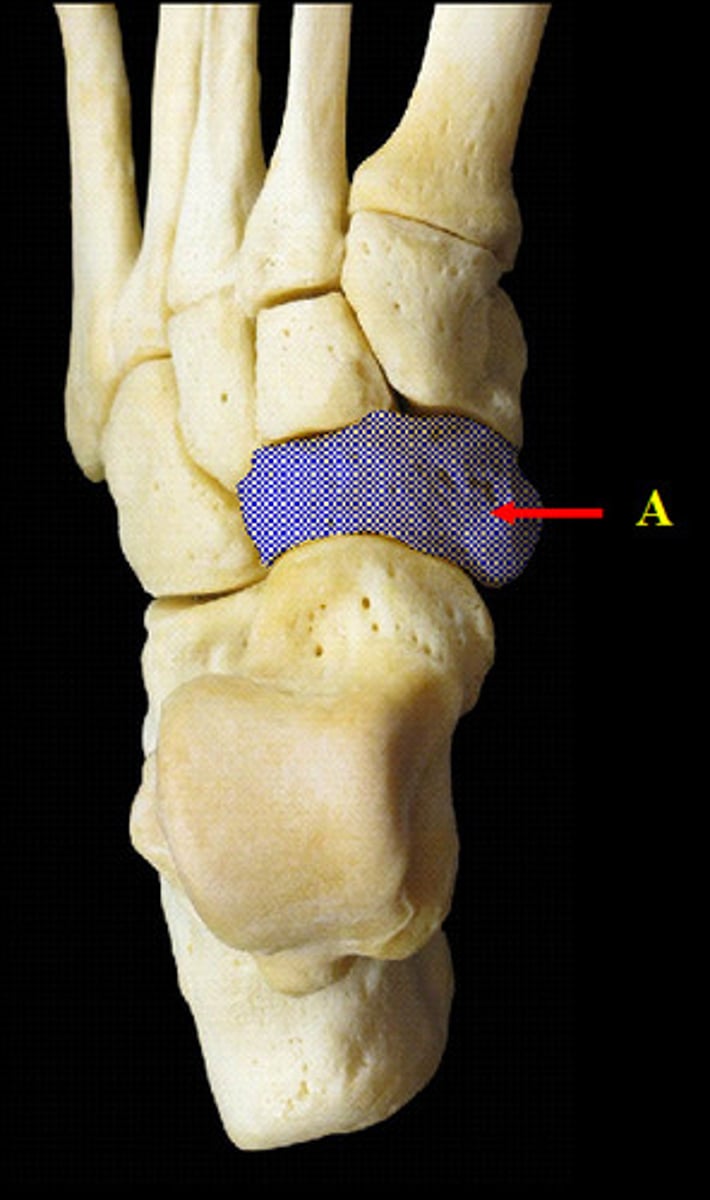
cuboid
Name the bone.
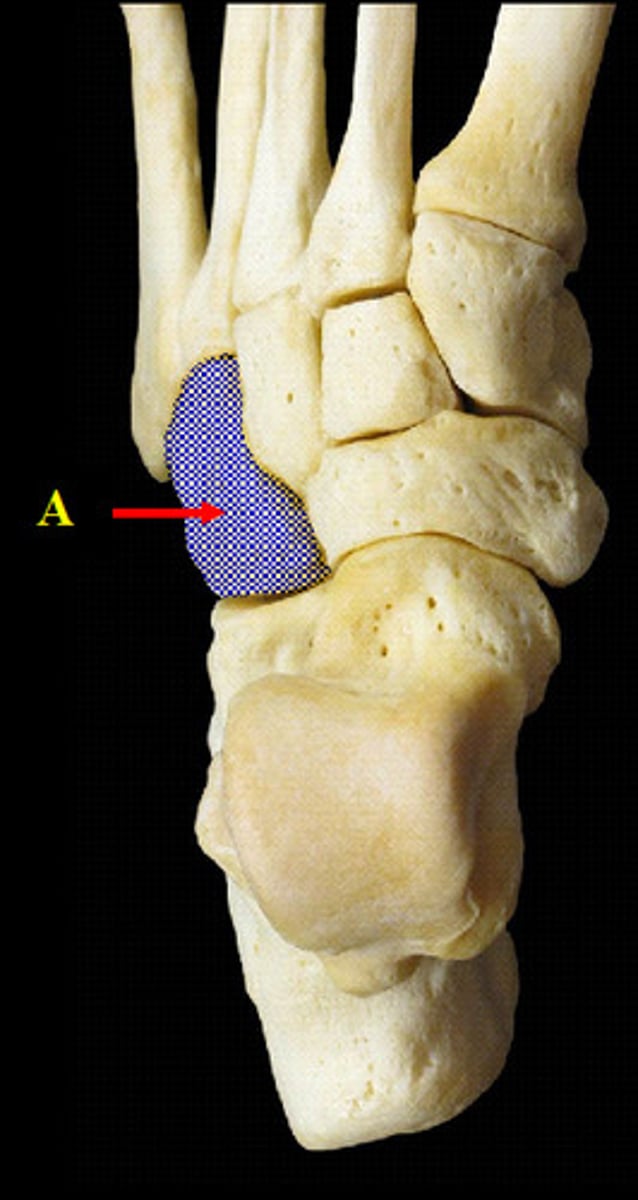
Cuneiform Bones (medial, intermediate, lateral)
Name the highlighted bones
